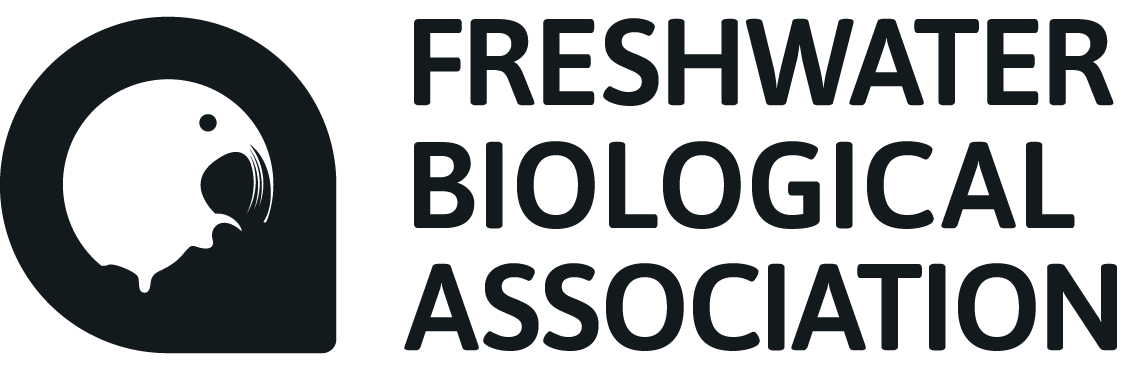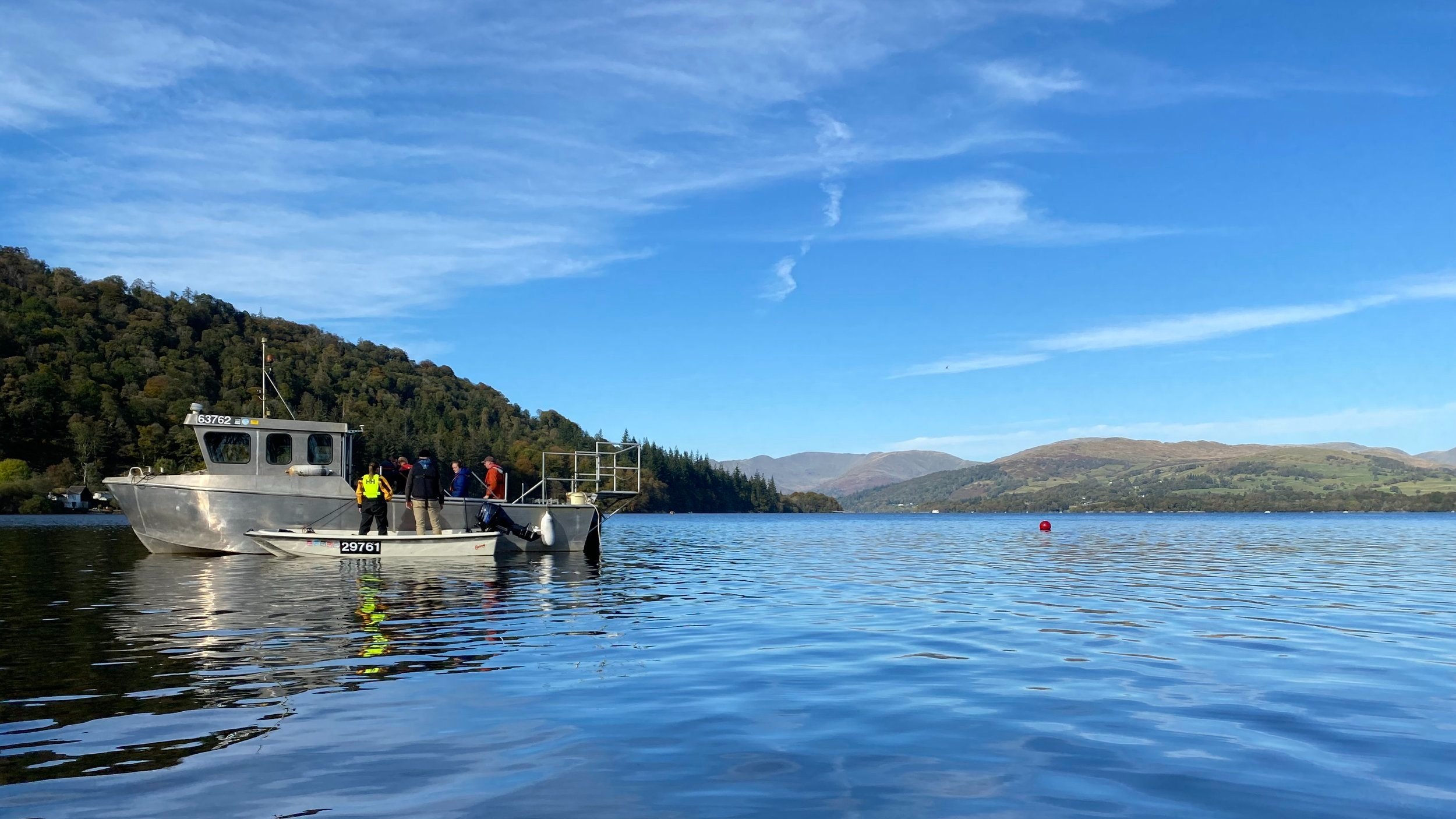
Lake District - Charr Recovery & Management (LD-CHARM) Project
The Freshwater Biological Association is leading LD-CHARM, a new research-focussed partnership project to explore the conservation actions required to sustain and protect Arctic charr populations in the Lake District.
The Arctic charr populations of Windermere have been studied since the 1940s, but their cultural significance in the Lake District dates back hundreds of years.
The breeding habits of charr in Windermere were commented on as early as 1671, when Sir Daniel Fleming wrote: ‘up the river Routha [Rothay] go yearly plenty of large trouts, and up Brathey [Brathay] many case (a fish very like a charr but of different species), it spawning at another time of the year’. In a letter to Lord Arlington written in 1665 explaining the difference between charr and case Fleming says ‘They are much alike, but the latter is smaller and spawns at a different time’ (W.E. Frost, 1955).
International recognition of the Arctic charr populations of Windermere contributed to the Lake District becoming a UNESCO World Heritage Site in 2017 and scientific study is an increasingly important part of ongoing conservation efforts to understand the behaviour of this rare species.
Challenges facing the Lake District Arctic charr
Over the past few decades, stocks have declined due to a range of environmental pressures including water pollution, competition and predation by invasive non-native species such as roach and ruffe, declining extent and condition of spawning habitat, open water habitat becoming more challenging due to severe and longer-lasting low oxygen sags and rising water temperatures due to climate change.
Photo of Arctic charr by Chris Conroy
Populations of Arctic charr in Windermere
Windermere is the largest natural lake in England. Plummeting to a depth of around 64 metres, its waters support one of the few Arctic charr populations in England, all of which are found in Cumbria.
Arctic charr (Salvelinus alpinus) are cold-water fish, most commonly found in sub-Arctic regions. The Lake District populations are near the southern extent of their natural distribution, making them susceptible to the effects of climate change. The population in Windermere used to consist of five distinct races of charr; one river spawning race and a spring and autumn spawning race in each of the lake’s North and South basins.
Aerial photograph taken at Fell Foot, southern end of Windermere.
Conservation considerations for the Windermere Arctic charr
There are wide ranging concerns regarding the current status of Arctic charr in Windermere but a lack of evidence to drive decision making and conservation actions. There is an urgent need to review the state of knowledge and develop new monitoring and assessment protocols for Windermere. Not enough is known about the population genetics of the Windermere population (including any differentiation among the different races), and how it fits into a UK context.
To drive decision making and conservation actions for Windermere’s Arctic charr there is an urgent need to review the state of knowledge and develop new monitoring and assessment protocols for the lake.
The FBA and its predecessors had historically strong data sets for Arctic charr in Windermere, but this has faded in recent years with the decline of funding to employ expert fish biologists to study populations. Despite this, Windermere is the best studied charr fishery in England but there is a current lack of data to understand status, trends, genetics of populations plus the condition and location of spawning grounds. Arctic charr surveys were traditionally undertaken using gill netting, hydroacoustics and angler catch records. Gill netting is a lethal survey method and recently eDNA surveys have proven a viable alternative to show presence of the species in the vicinity of spawning grounds.
The Lake District - Charr Recovery & Management (LD-CHARM) project, being spearheaded by the FBA, will develop innovative and non-lethal survey methods using sonar and eDNA methods to tell us more about how the Windermere charr population is faring, in order to produce urgently-needed conservation plans to help save the species from extinction in Windermere.
Arctic charr - film by Chris Conroy
Aims of the Lake District - Charr Recovery & Management project
Whilst Arctic charr and the reasons for their decline in the Lake District (and particularly in Windermere) have been studied for decades, this new LD-CHARM project will centre on action-focussed research to protect and restore populations locally. Using a variety of applied and pure scientific methods such as hydroacoustics, eDNA and population genetics investigations and in-depth habitat surveys, we will address key questions regarding:
What are the pressures on charr spawning habitat and what can we do to alleviate them?
Where are suspected and/or as-yet undiscovered spawning areas and what is their condition? This data will help provide evidence of how charr spawning behaviour is changing in response to climate change and other pressures.
How many independent charr populations and conservation units exist within the Lake District, particularly within Windermere, and what is the genetic health of these populations? This will support the design of effective conservation strategies to preserve maximum genetic diversity.
Answering these questions will allow for prioritisation of actions to safeguard populations at risk of imminent extinction and focus scarce resource on the most appropriate actions.
If you would like to support our work please consider donating to this project.
Images from the 1st Oculus trial for the Lake District - Charr Recovery & Management project in early October 2024




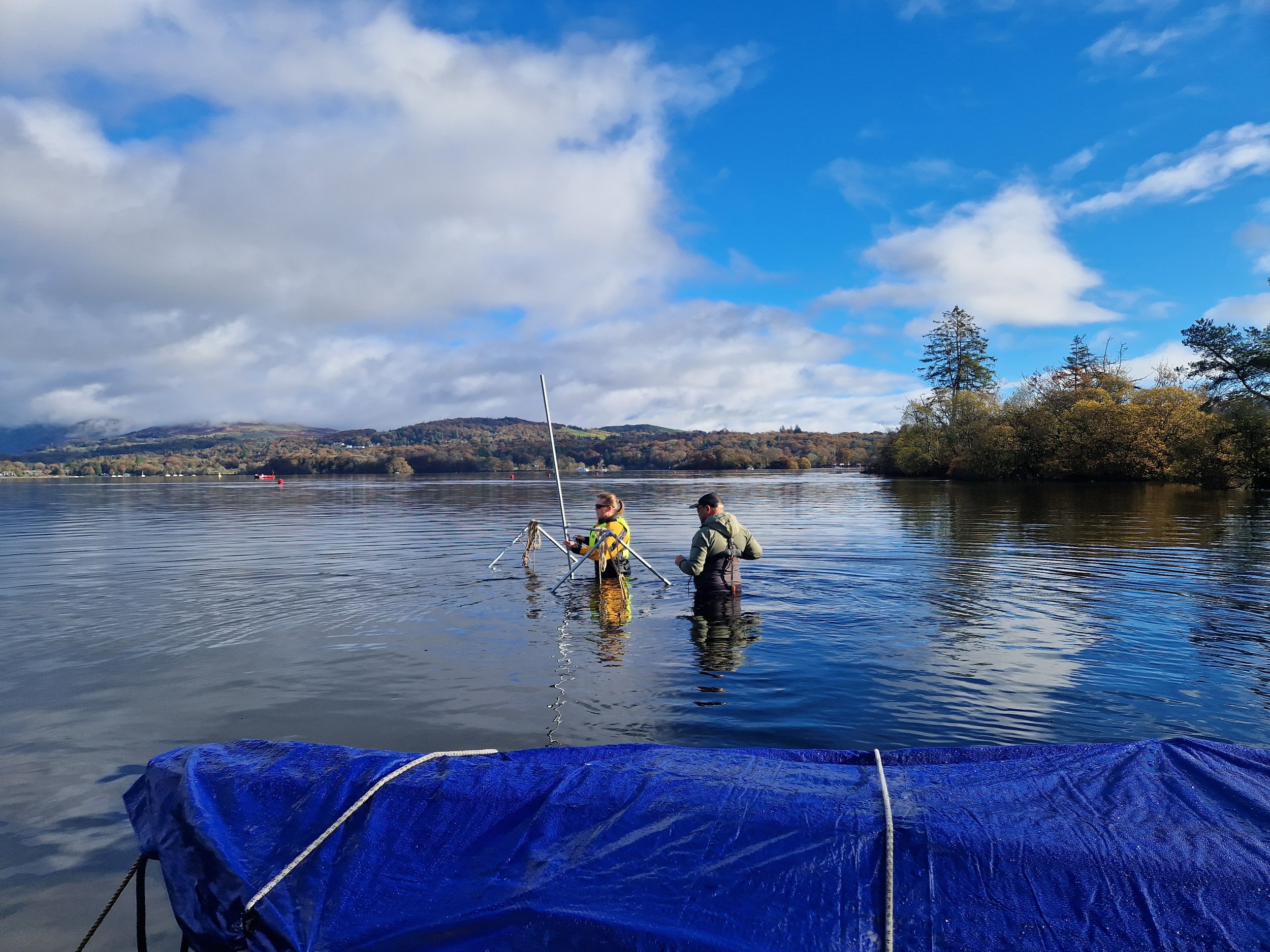

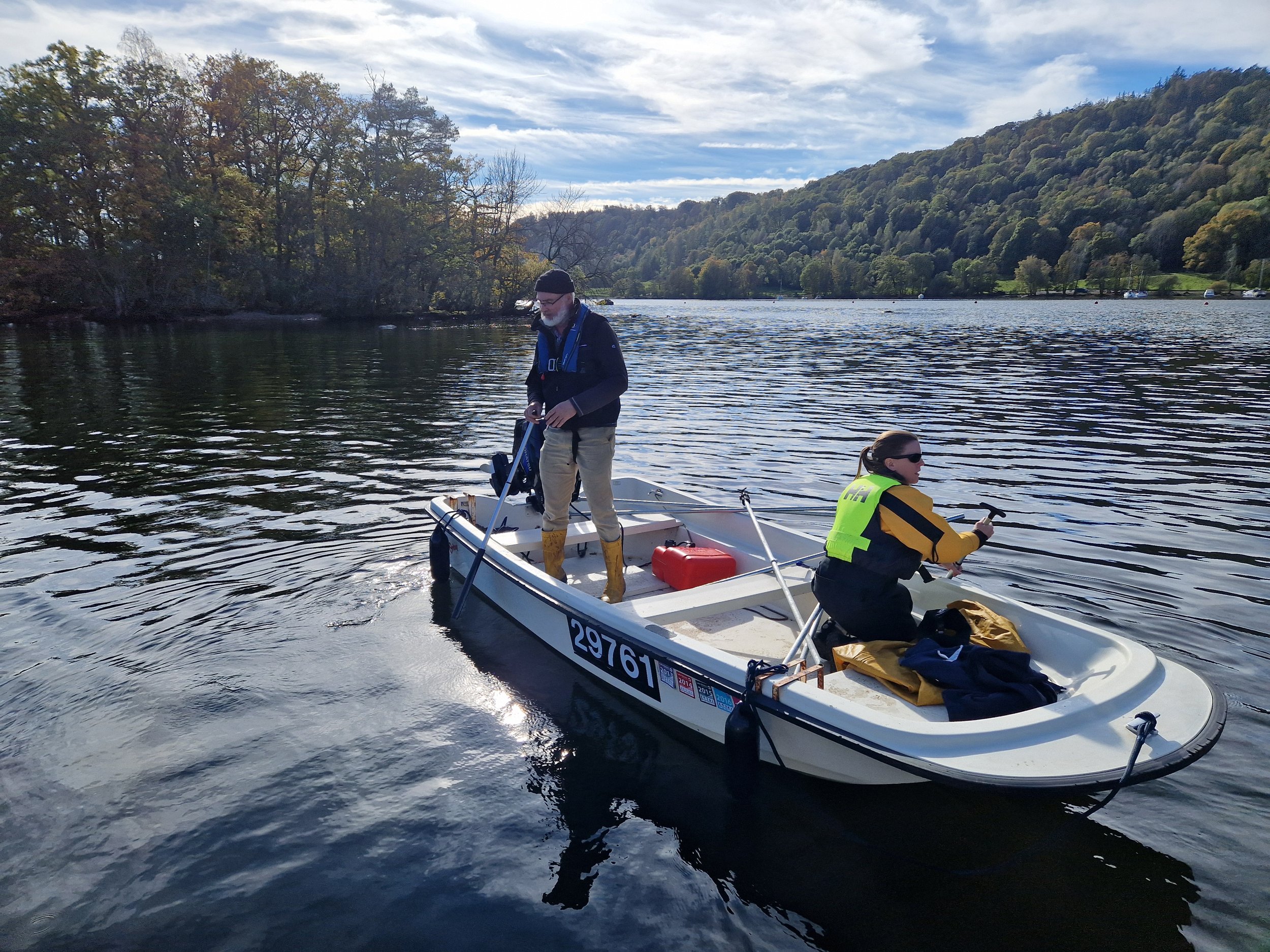





Endorsements for the LD- CHARM project
Findings from the Lake District - Charr Recovery & Management project
Lessons learned during the Lake District - Charr Recovery & Management (LD-CHARM) project will be used to inform and develop a Lake District Rare Fish Conservation Programme.
Findings from the project will be presented at symposia, workshops, peer reviewed journals and on the FBA website.
Setting off on the sonar trial for the Lake District - Charr Recovery & Management (LD-CHARM) project in October 2024
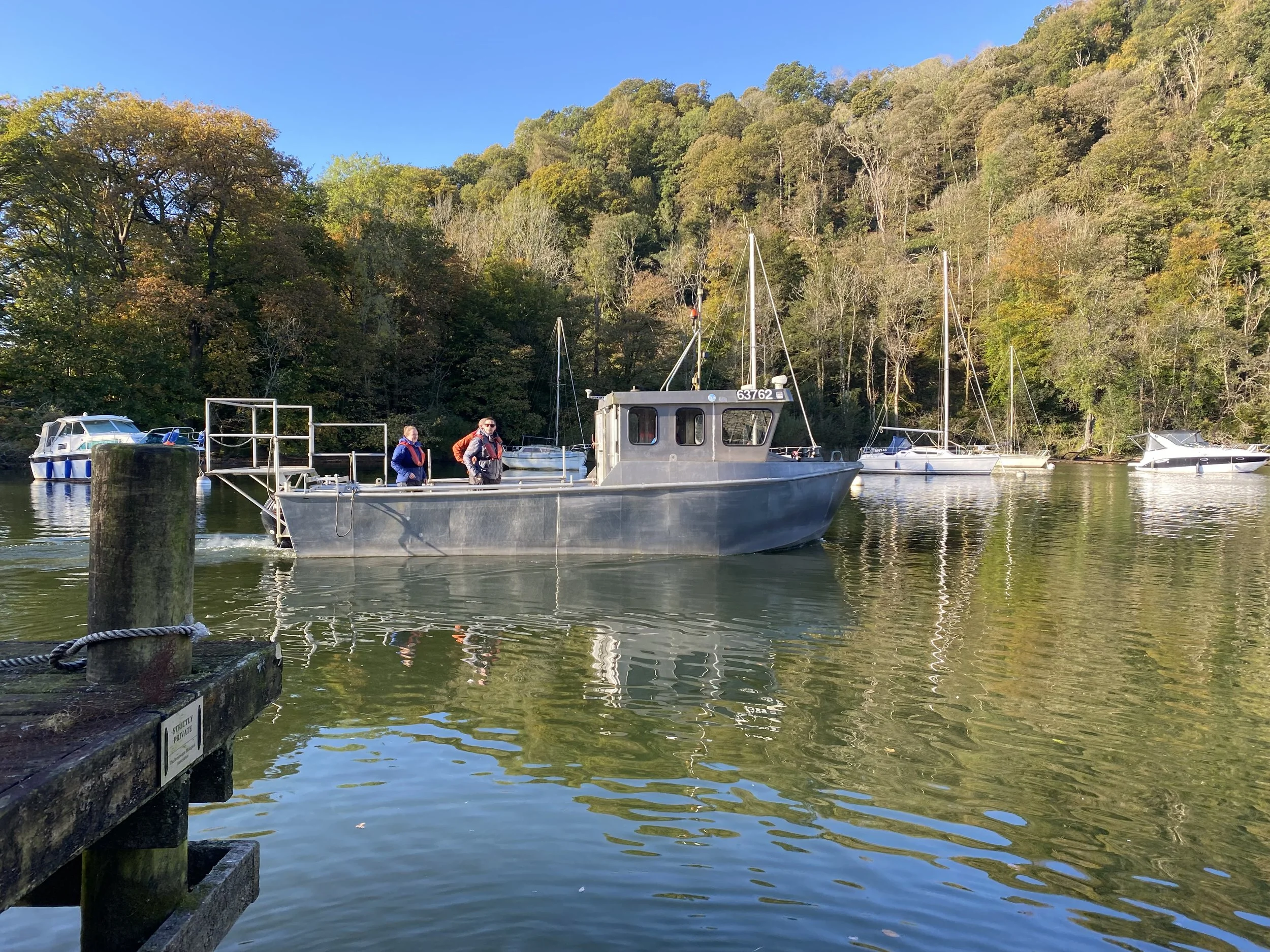
Lake District - Charr Recovery & Management (LD-CHARM) project partners
The Lake District - Charr Recovery & Management (LD-CHARM) project is a consortium led by the Freshwater Biological Association involving the following partners: Echoview (active hydroacoustic data & software specialists); Blueprint Subsea (manufacturers of hydroacoustic hardware); UK Centre for Ecology and Hydrology (lake ecology and eDNA expertise); Colin Bean - Honorary Professor at University of Glasgow; University of Highlands & Islands (population genetics); Institute of Fisheries Management (knowledge exchange); Lake District National Park Authority (nature recovery); Westmorland & Furness Council (owner of bed of Windermere); Environment Agency (fisheries management); Natural England (the government's adviser for the natural environment in England).
Many thanks to Chris Conroy for the Arctic charr images and video - @chris_fish_biologist
